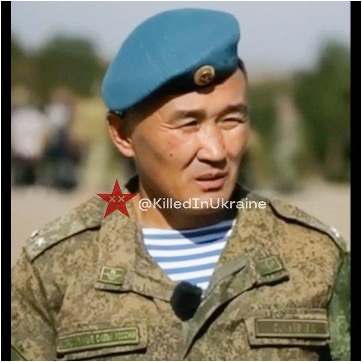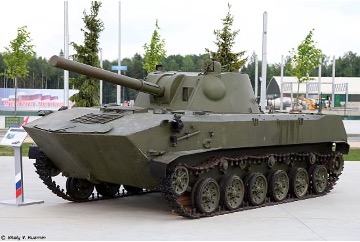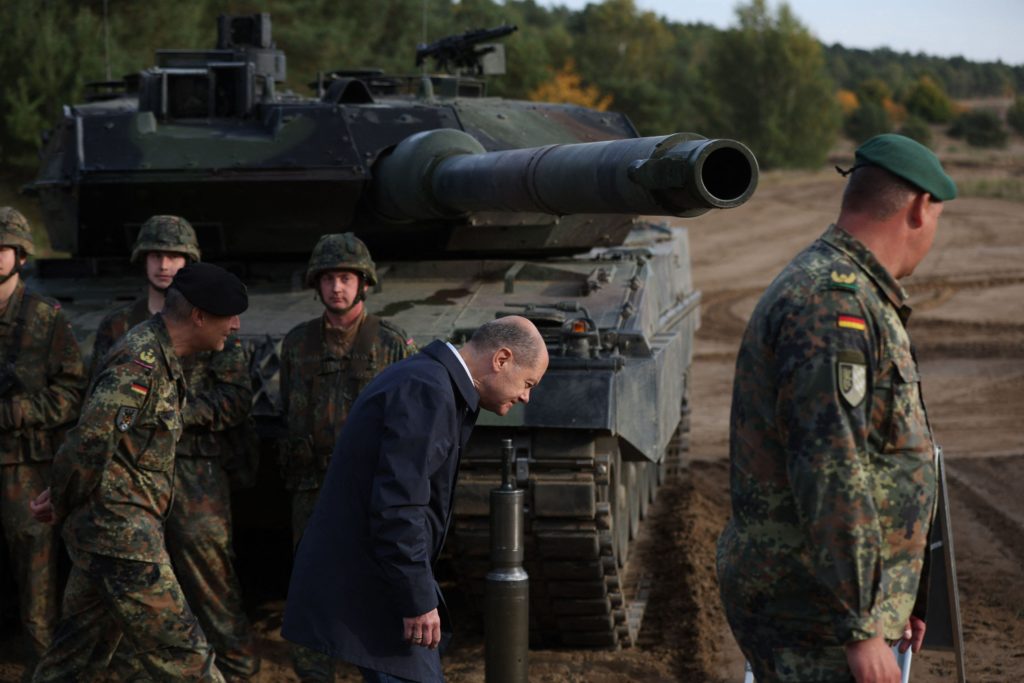https://wavellroom.com/2023/02/01/anatomy-of-a-russian-army-village-assault/
Anatomy of a Russian Army village assault
by Sergio Miller
February 1, 2023
At the end of December 2022 a set of discarded Russian Army orders found near the village of Kyselivka in Kherson Oblast was passed to the editor-in-chief of
Ukrainian journal Censor.net Yurii Butusov. They related to an assault on the village of Blahodatne on 15 August. Kyselivka is roughly 20 kilometres north-west of Kherson City centre and is the gateway to the city on the M-14. Blahodatne is another five kilometres further on and was the frontline settlement during the Russian occupation of the Dnipro right bank. The Ukrainian unit defending in this area was 18 Battalion, 35th Marine Brigade. The orders pertained to an assault company from 108th Guards Air Assault Regiment.
Location of Blahodatne on the Kherson Front 15 August 2022 Source:
MilitaryLand.net
The orders and action offer valuable insights into limitations and problems facing the Russian Army. This article considers the orders and the attack and discusses what it means.
108th Guards Kuban Cossack Air Assault Regiment
108th Guards Air Assault Regiment (108 дшп) is one of two assault regiments in 7th Guards Airborne Division (7 дшд), based at Novorossiysk, Southern Military District (YuVO). The sister 247th Guards Air Assault Regiment (247 дшп) suffered significant casualties in the first month of the war. On the eve of the invasion, 56th Guards Airborne Regiment (56 дшп) was subordinated to the division. In March 2014, 108th Guards Air Assault Regiment
participated in the seizure of Crimea.
Paratroopers from 108th Guards Airborne Assault Regiment pose in Crimea in 2014 Source:
InformNapalm
The unit subsequently took part in the ‘humanitarian convoys’ (military trucks re-painted white) entering Luhansk Oblast in the summer. Volunteers fought in the Donbass in 2016.
In February 2022 the regiment was involved in the capture of Kherson alongside 56th Guards Airborne Regiment (vividly described in dissenting paratrooper
Pavel Filatyev’s e-autobiography ‘ZOV’). The unit remained in the Kherson City salient under the command of Colonel Vitaliy Sukuev. He commanded the regiment in the assaults on Blahodatne and was killed on 28 September.
Colonel Vitaliy Vladimirovich Sukuev, killed in action at the end of Sepetmber.
There was fighting at Blahodatne in May, August (the attack described in this article), and September. The village was captured and lost. Russian efforts to advance the frontline were in the end unsuccessful.
According to separate documents acquired by Ukrainian military journalist
Andriy Tsaplienko in November and made available
via his Telegram channel, 108th Air Assault Regiment was 956-strong and equipped with five tanks, 11 BMDs, and 64 other assorted tracked and wheeled vehicles. These numbers suggest two under-strength battalion tactical groups (BTGs) and over half the pre-war equipment lost (for example, a battalion set of BMDs is 41 vehicles, not 11).
The objective: Blahodatne
Blahodatne is a typical agricultural village in Kherson Oblast, Ukraine’s ‘fruit basket’. The settlement is triangular shaped. The length of the village from north to south is roughly 1,000 metres. The longest length (hypoteneuse of the triangle) is about 1,500 metres.
The residential area comprising typical Ukrainian dachas with small gardens occupies the west of the village. A commercial area, assumed to be related to local agro-industry is to the east. The M-14 is immediately south. A parallel minor road is north of the settlement and visible in the Google Map below. The ultimate objective of the Russian assault was to take control of this road line.
There are numerous canals in the area that restrict cross-country movement. Blahodatne can be approached from the south by two minor roads. It is assumed these were the Russian axes of advance.
Blahodatne and assumed Russian axes of assault on minor roads Source:
Google Maps
The assault orders
The orders shown are one page long and run from dawn (5am) to dusk (7pm). Russian units do not as a rule fight at night due to the lack of night-fighting capabilities. A Western-NATO soldier would not understand these as a set of orders, but rather as timings within the coordinating instructions of a set of orders.
Paragraph 1 shows a ‘task organisation’. The remainder are a list of timings and instructions to the participating units and sub-units (an itemised ‘synchronisation matrix’ rather than showing the events as timelines on a schematic in the Western-NATO style).
The assault does not start until 4.00pm (to allow sufficient daylight hours to make some progress but insufficient hours for the defence to bring up reserves). The orders are therefore effectively ‘the fire plan’ which lasts all day and is discussed in the next section.
The orders for the assault on Blahodatne. A Western-NATO soldier would understand these as timings within the coordinating instructions of a set of orders. and an itemised fire plan also with timings.
The fire plan
The salient observation on the fire plan is that it belongs to the early 20th century. There is no direct relation (an artillery officer or party) between the assaulting unit and the units allocated to provide the offensive support (in Russian terms the rocket and artillery fires). The latter are controlled at divisional level and provide the fires
for but not with the assaulting unit. It is entirely possible for the assaulting unit not to have visibility of the fire plan other than the timings shown in the orders (which may contribute to fratricidal incidents).
In WWI-style (and in the practice of the Red Army in WW2), a lengthy bombardment is laid on for the assaulting unit, in this case lasting all day. At the conclusion of the fire plan the unit assaults. It has no further call on artillery or rocket fires.
The fire plan is indiscriminate. As witnessed in many scores of villages across Ukraine, the aim is to level the settlement and force the defenders to leave (because ‘there is nothing left to defend’ as a weary defender of Popasna in the Donbass remarked; this settlement, incidentally, pre-war home to 20,000 residents, has been completely erased from the map and will not be rebuilt).
The rocket and artillery units involved were:
- 1141st Artillery Regiment (1141 ап) (this is the organic artillery formation in 7th Guards Air Assault Division) – 34 x 120 mm 2S9 Nona self-propelled gun-mortars (in Russian terms this is two ‘divisions’);
- Unit not clear – 1 x TOS-1 thermobaric 220mm multiple rocket launcher (there were two units on the Dnipro right bank – 26 prkhbz and 17 prkhbz1 – and just two launchers; the spotting and destruction of TOS-1 systems was a partisan success);
- 8th Artillery Regiment (8 ап) of the Black Sea Fleet – 8 x BM-21 Grad 122mm multiple rocket launchers;
- 291st Artillery Brigade (гсадн 291 абр)2 allocated for counter-battery fires) – up to 18 x Msta-S 152mm self-propelled guns.
In total, there were eight consecutive artillery bombardments from 5.00am to 4.50pm. 1141st Artillery Regiment (2S9s) conducted the majority of fire missions at an assumed low rate of fire.
2S9 gun-mortar Source:
Vitaly V. Kuzmin
The 2S9 was designed in the 1970s. An effective range is in the order of 8 kilometres. The vehicle
3 does not benefit from modern fire control systems associated with Western mounted 120mm mortars.
A single Chinese Mavik-type quadcopter supported the fire plan. However, it was not used to correct fire. The quadcopter was flown at the conclusion of the bombardments to assess damage and plan the following day’s fire plan.
The assault group
The assault group comprised an under-strength company. It could be understood as a forlorn hope party (plainly, an understrength company could not capture a settlement the size of Blahodatne which is more properly a battalion objective). The use of forlorn hope parties has been widespread in the Russian war in Ukraine. The (unlucky) group attempts to make as much yardage as possible before casualties and general attrition bring the assault to a standstill. A reserve group then replaces the assault group. The task of this second group is to dig trenches, defend against counter-attacks, and consolidate ground gained. The following day, the drill is repeated. In the case of the assault group at Blahodatne the mission was to achieve ‘break in’ and gain a foothold in the south of the village.
The assault group comprised:
- 3 x T-72B3 tanks (from 104th Separate Tank Battalion (104 отб) the organic tank battalion in 7th Guards Air Assault Division);
- 7 x BMD-2.
The number of paratroopers in the assault group, judging from the number of BMD-2s, was two platoons and 40-odd soldiers. The reserve used to secure the captured line comprised as many as 80 soldiers.
The reader should be aware 108th Air Assault Regiment was
re-equipped with a battalion set of BMD-4Ms in March 2020. The fact that the paratroopers were now operating the 1980s-era BMD-2 suggests the entire set (41 vehicles) was lost in the six months between February and August. Without hyperbole, this would be a disastrous loss. BMD-4M is a modern AFV with modern sensors, fire control system and stabilised 100mm gun. BMD-2, as would be expected for a vehicle of this vintage, has none of these features.
The second important point relates to communications. The T-72B3s would be equipped with digital, encrypted R-168 Aqueduct radios procured in the noughties. The BMD-2s would be fitted with analogue, unencrypted Soviet-era R-123M radios. All call signs in the assault group would therefore communicate at the lowest common technological denominator – on unencrypted, analogue, short range VHF with
effective ranges of 2.5 – 3 kilometres. It is possible the assault group was unable to communicate with any other call sign outside the assault group, including the reserve group waiting to replace the exhausted troops at the end of the day. This is a reason why orders include detailed, sequential timings. In the absence of adequate communications all call signs in an operation need to know where they need to be and when they need to be there. The potential for confusions and failures are self-evident.
Observations on the assault
The assault was not led in by a reconnaissance force. It is uncertain whether there was any reconnaissance at all. As previously described, there was no artillery support after the fire plan lifted. The lack of artillery forward observers; the described inadequacies of tactical communications; and ‘old-fashioned’ fire control practices mean an infantry company cannot conduct dynamic or ‘on call’ offensive support. The Russian Army also lacks necessary ground-to-air communications and tactical air control parties, in Western-NATO nomenclature. There was therefore no support from tactical bombers (the Su-25
Grach ‘Rook’) or attack helicopters (the Ka-52 ‘Alligator’). The lack of ground-to-air communications and poor coordination, in fact, has led to
fratricidal downings of attack helicopters. There was no engineer support. There was no battlefield ambulance. There was no coordination with flanking units or flanking actions. There was no surprise, deception or use of smoke to cover the assault group.
From abundant YouTube videos of similar actions it may be assumed the BMD-2s lined up behind the three tanks in single file and conducted a frontal assault. The paratroopers would have been riding on top of the vehicles. As the assault group reached the outskirts of the village the tanks probably fired HE-Frag shells at close ranges against possible (or imagined) Ukrainian positions. The BMD-2s would have fanned out in extended line with about 50 metres between vehicles and the paratroopers dismounted and attacked on foot. This drill – ‘the attack from the line of march’ – is the staple Russian Army drill practised on ranges. The frontage would have been in the order of 300 – 400 metres.
The outcome of this particular assault is not known. The fighting in Kherson Oblast was reported by a variety of open sources over this period, including references to Blahodatne. At the beginning of September the war news was dominated by the dramatic Ukrainian counter-offensive in Kharkiv Oblast. At the beginning of October a new Russian general (Surovikin) was appointed as the operational commander. All Russian forces were withdrawn from the Dnipro right bank by 11 November. Ukrainian forces had retaken Blahodatne one week earlier on 4 November.
A Blahodatne resident overcome with emotions at the arrival of Ukrainian troops. Both his parents were killed during the Russian occupation. Source:
Sight Magazine
A concluding thought…
The experience of the Russian Army in Ukraine offers a salutary example to any army. In November 2021, CIA Director Bill Burns travelled to Russia to warn Moscow not to invade Ukraine. His interlocutor – Chairman of the Security Council Nikolai Patrushev – reportedly put down his notes, eyed the American, and told him ‘we can do this’, the Russian Army today was as good as the US Army. This was deluded boasting.
Communications are fundamental to everything an army does. In February, a Russian Army was sent into Ukraine with incoherent and unfit tactical radio systems. This is why the story of the Russian Army has been hundreds of disjointed and wasteful company and platoon-level operations, such as the action described in this vignette. It is the reason why the Russian Army had been unable to coordinate brigade or divisional operations. This author could not improve on the verdict of the prolific and irate
Russian defence writer Roman Skomorokhov:
‘…
the SVO [‘special military operation’]
perfectly shows that BTG (battalion tactical groups) in the modern conditions of Ukraine and with the current state of communications in the Russian army (at the level of the 60s of the last century) and reinforced brigades are simply nothing… with zero level of joint interaction of troops, without modern intelligence and control, [and]
simply not capable of solving problems in the modern theater of Ukraine.’
There appears little prospect this will change in the foreseeable future.
-
Sergio Miller is a retired British Army Intelligence Corps officer. He was a regular contributor and book reviewer for
British Army Review. He is the author of a two-part history of the Vietnam War (Osprey/Bloomsbury) and is currently drafting a history of the Russian invasion of Ukraine.















